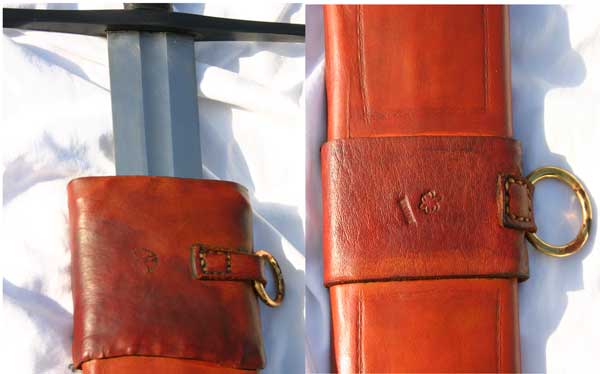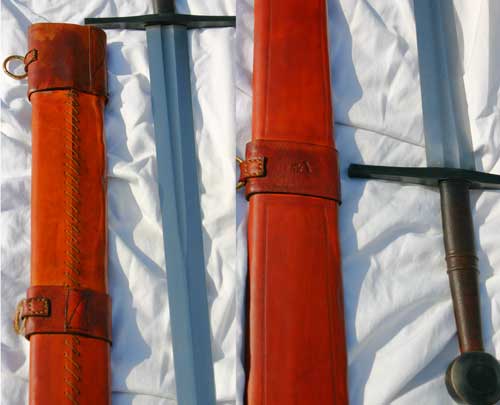I planned on a two point suspension thinking that a simple shoulder strap would be appropirate for late 12th century to early 13th century combatants, and consistent with some Bayeux tapestry images of scabbard harness that forum members have been kind enough to post in the past. My two point suspension (testing with rope at this point) is perfect while the sword is in the scabbard. Once the sword is removed, the scabbard CG moves down about 10 inches (255 mm.) Duh.... I am convinced that in the case of a two point suspension (like shown in the tapestry), the scabbard tip will always droop towards the ground once the sword is drawn. This presents a terrible risk of tripping and is aggravating if the scabbard is long for an epee du gere or hand and a half style weapon with long blade length. As long as the scabbard is discarded before actually wielding the sword, no big deal. Otherwise, I figure at least three attachment points are needed (the lower strap and middle strap to hold the scabbard at a desired angle with the sword removed, while the middle strap and strap closest to the mouth are needed to support the scabbard at a desired angle while the sword is in the scabbard.)
So where did I go wrong? Were three point harnesses used by those who reportedly had uncommonly long swords (Edward the Black prince and his body guards, King Harold at Hastings, etc.) despite the fact that tapestries don't show this? Did everyone just discard the hazardous empty scabbard at the first convienient moment?
Theories, experience, and ridicule are welcome! At this point I figure the project is just a cool looking storage device.

